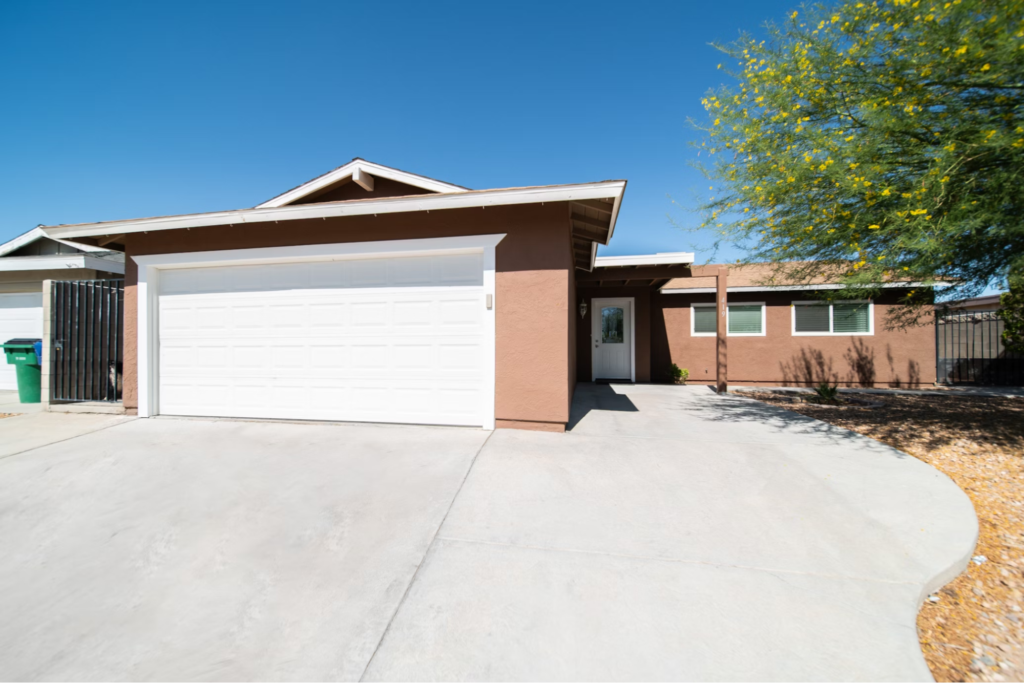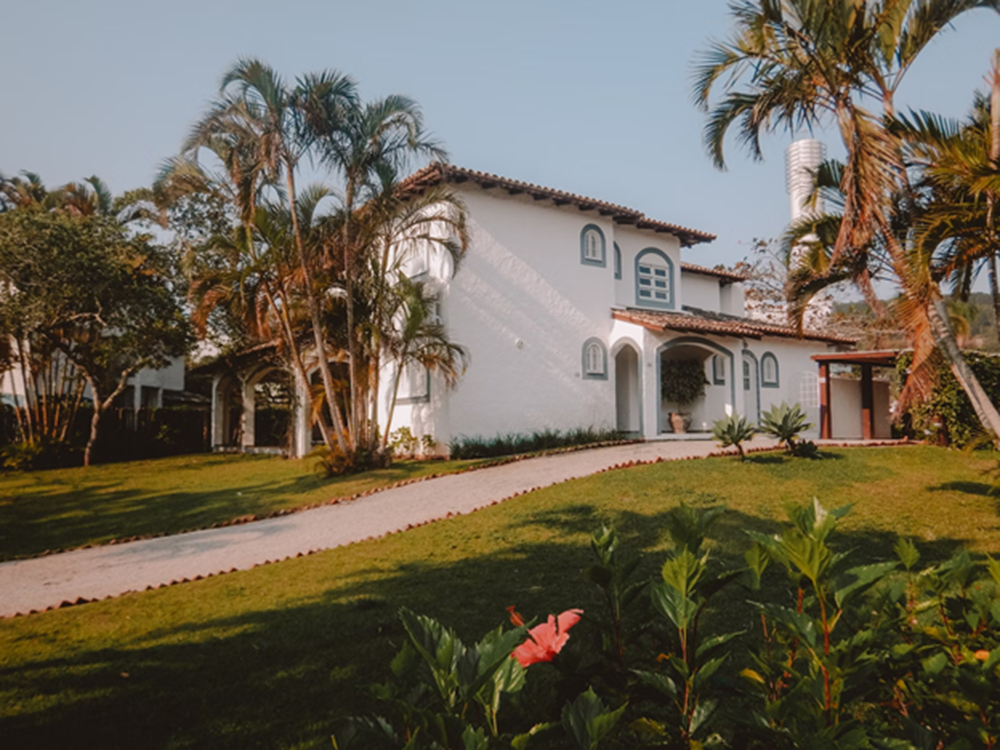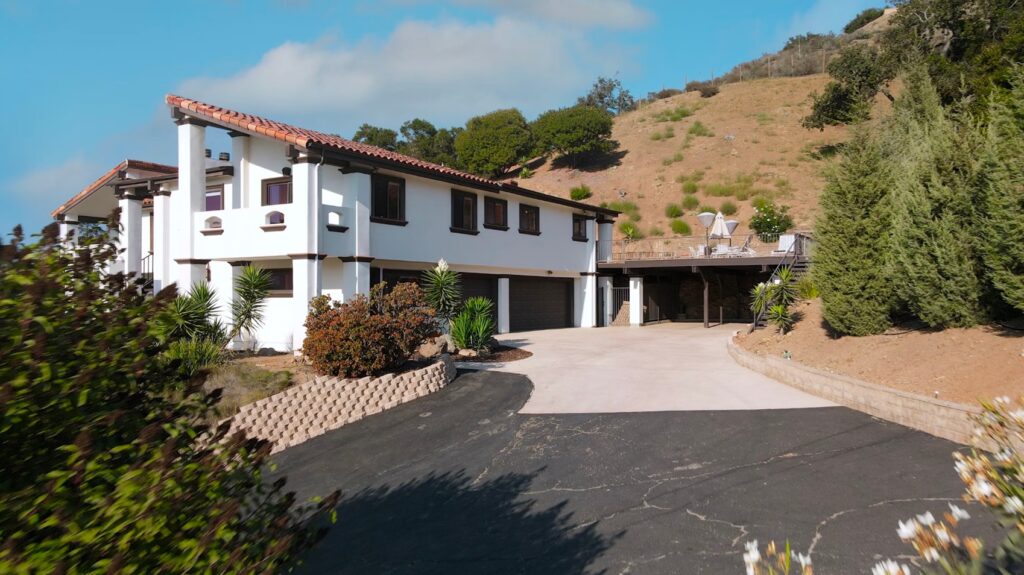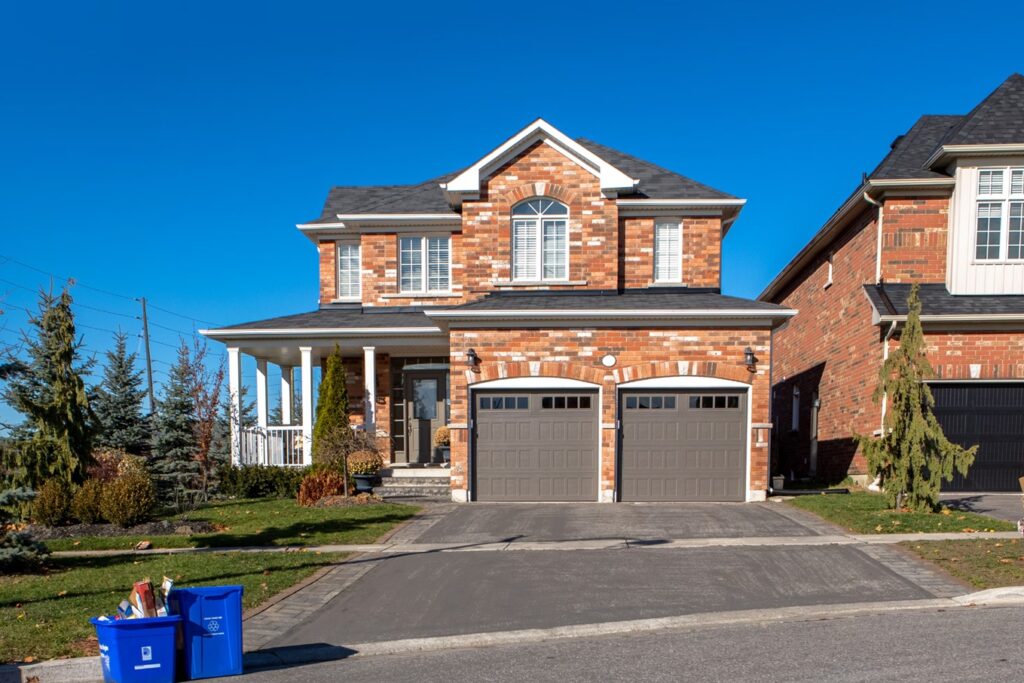A healthy driveway should keep a steady, even gray for years. When it starts sprouting oil shadows, green films, or orange streaks, the concrete is sending an SOS you can’t afford to ignore. Each stain tells a different story — oil weakens pores, algae traps moisture, rust sparks chemical decay — and every one of them shortens the slab’s life.
Replacing a two-car drive can cost as much as a family vacation, so early action is cheaper and far less stressful. That’s why many homeowners who type “pressure washing companies near me” into Google really need more than cosmetic help; they need a partner who understands what those colors mean and how to stop the damage.
As a veteran-owned, family-run outfit with deep roots in Evans and Augusta, our team at Veterans Pressure Washing reads these warnings every day and turns them around for our neighbors.
Color Clues You Shouldn’t Ignore
Fresh Oil Slicks vs. Oxidized Black Patches
Motor oil seeps into concrete pores and expands with summer heat. The glossy stage is annoying but fixable; once the spot dulls to charcoal, oxidation has begun eating the cement binder. Our heated surface cleaners and pro-grade degreasers break that bond, flush the residue, and leave the slab ready for a protective seal.
Green Films and Black Mildew Stripes
Algae flourishes in Georgia humidity, while mildew hugs the line where parked cars cast shade. Both growths trap water and turn the drive into a slip-and-fall hazard. We apply a biodegradable surfactant that destroys the biofilm at its root, then rinse on low pressure to preserve the finish — no etching, no regrowth, and no bleach runoff into your lawn.
Rust and Orange Trails
Iron patio chairs, fertilizer pellets, even brake dust leave orange veins that bond chemically with lime in the slab. Bleach barely budges them. We deploy a controlled citrus-acid wash, monitor dwell time, and neutralize the area so the reaction can’t restart — color gone, surface intact.
Chalky White Efflorescence
Those fluffy white crystals are salts migrating up through hairline cracks. They announce that water is moving inside the concrete and pulling minerals with it. A gentle soft-wash dissolves the deposit, and a breathable penetrating sealer closes the escape route without trapping moisture below.
What Stains Reveal About Hidden Damage
Discoloration rarely travels alone.
- Dark, damp-looking blots on sunny days often mean your original sealer failed and the slab now wicks groundwater to the surface.
- Green rings along lawn edges point to biofilm chewing through the aggregate.
- Tire-darkened tracks show rubber polishing minerals away and reducing traction.
During every cleaning visit we tap-test for hollow spots, log surface-hardness readings, and photograph early spalling so you have a concrete-health record. Catching these issues now saves hundreds in future repairs and keeps your driveway looking sharp.
Our Veteran-Owned Cleaning Process
Renting a big-box washer gives you pressure; it doesn’t give you control. Our trailer rigs deliver hot water up to 200 °F, adjustable flow rates, and surface cleaners that stay a fixed height above the slab, eliminating “tiger stripes.” Enzyme or alkaline pretreatments loosen oil and antifreeze before rinsing.
A soft-wash blend kills algae yet leaves surrounding plants unharmed. After rinsing we verify surface pH so optional sealants bond instead of peeling. The result: a driveway that looks right and lasts longer — true pressure washing in Augusta, GA built on science, not guesswork.
Service Area at a Glance
We live where we work: Evans, Augusta, Martinez, Appling, North Augusta, and Aiken. That local focus lets us schedule quickly and respect every county’s water rules.
Many residents search “pressure washing companies near me” and gamble on the cheapest bid. Choosing us means certified technicians, commercial-grade equipment, and a service mindset forged by military standards — punctuality, respect, and transparent communication.
Maintenance Plan for Concrete That Goes the Distance
- Quarterly visual checks – After heavy rain, walk the drive and note any new colors or damp zones.
- Annual wash – Spring cleaning removes pollen film and winter salt, the main triggers for summer algae and efflorescence.
- Spot treatment within 72 hours – Fresh oil or paint is ten times easier to remove than aged stains.
- Seal every three years – A penetrating, breathable sealant blocks salts without trapping moisture inside.
We send reminders when each service is due, and bundling driveway care with house, roof, or deck washing keeps upkeep simple.
Ready for a Drive That Looks — and Stays — Healthy?
Stains never fix themselves, and small patches evolve into costly cracks faster than most homeowners expect. Our expert care keeps your driveway strong, safe, and attractive all year. Contact us today and protect the entrance to your home before minor discoloration balloons into a major expense.





